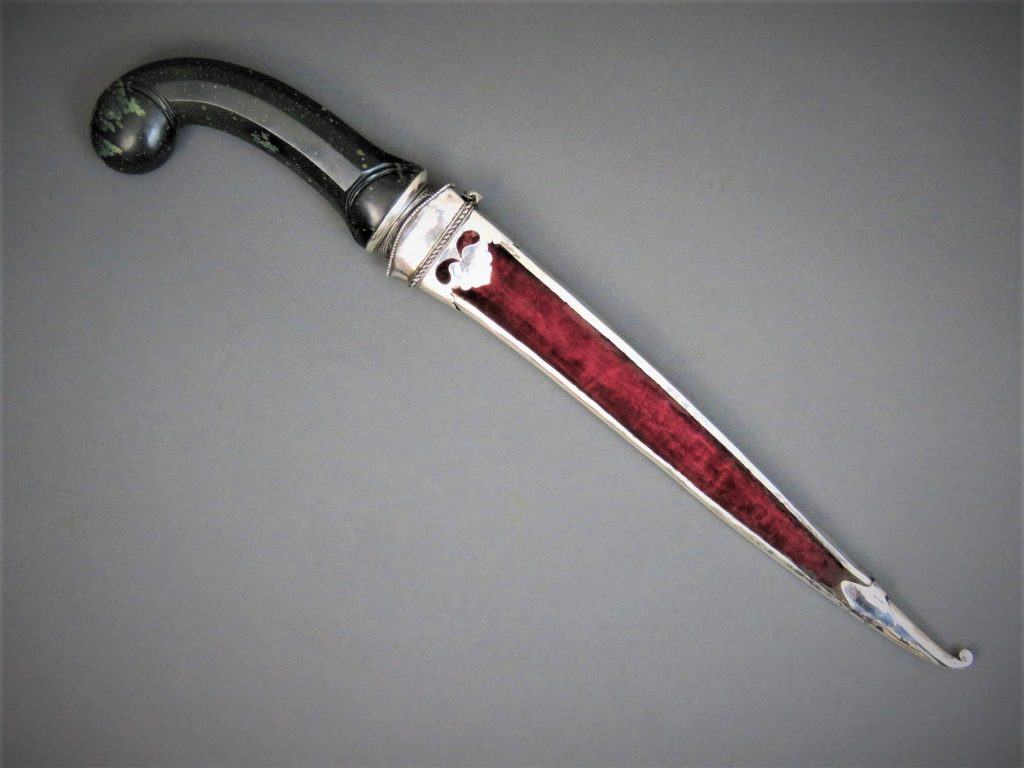
A rare Silver Mounted North Indian Mughal Pesh-Kabz Dagger of the late 18th century with a noble dedication
To enquire about this itemplease click here
Price: £
Ref:
Item Description
A fine and elegant Pesh-Kabz forged with a blade of typical curved and pointed shape made from the finest Indian crystalline wootz steel. The dagger is notable and scarce because of its inscription which points to Sunni beliefs and its origin in the Mughal kingdoms of India in the 18th century.

The blade has a re-enforced back edge of “T” section which optimises maximum strength and lightness of weight in a blade designed for no practical purpose other than to penetrate mail and clothing as a stabbing weapon used with force. The more refined examples like the dagger discussed here have the same functional capability, and due the quality materials used plus the high levels of craftsmanship involved in the manufacture, were not only effective weapons but were also worn in formal dress as decorative marks of status and authority by nobility.
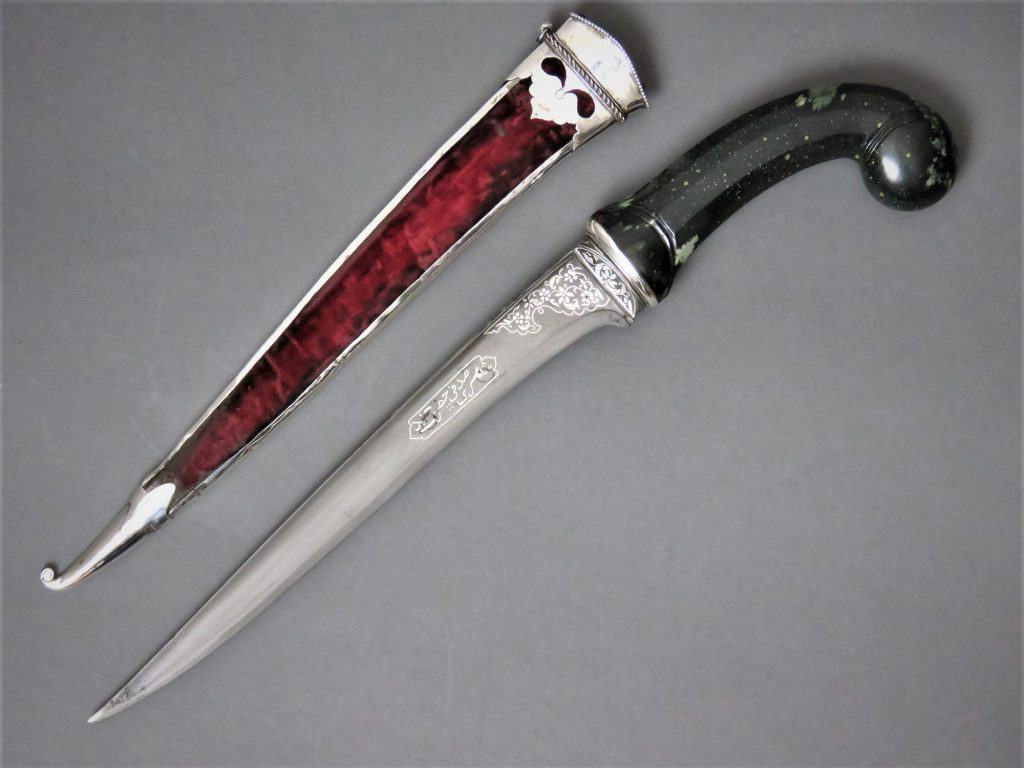

The hilt is made of jade which was often used on Mughal dagger handles and occurs in natural colours; green, yellow, and white being the most common. The hilt of this dagger is made from a much sought after coloration known as “spinach jade” because of the deep dark green colour made even more attractive by intrusions of other colours which resemble flowers.
The grip has been shaped by grinding flat facets in its middle parts to create a twelve sided cross section. It is a more difficult feat for the artisan to achieve the perfectly straight line ridges between the panels compared to the more usual grips of rounded section, and is the mark of a highly skilled craftsman. The selection of the stone, a piece with balanced intrusions, is a skill in itself. The grip is cut with semi-circular mouldings at the base protected by a silver ferrule and with rounded pommel on top.


The dagger is a prestigious object which is borne out further by the silver inlaid inscriptions on the blade. At the forte the first four Caliphs of Islam, and Companions of the Prophet, are written into a panel: Abu Bakar, Umar (Omar) ibn al-Khattab, Uthman (Othman) ibn Affan & Ali ibn Abi Talib (Ali Haidar). The Sunnis recognize the first four Caliphs as the Prophet Muhammad’s rightful successors, whereas the Shiah believe that Muslim leadership belonged to Muhammad’s nephew, Ali, and his descendants alone. Consequently, a Shiah inscription would not recognise the first three prophets in the same manner as the fourth.
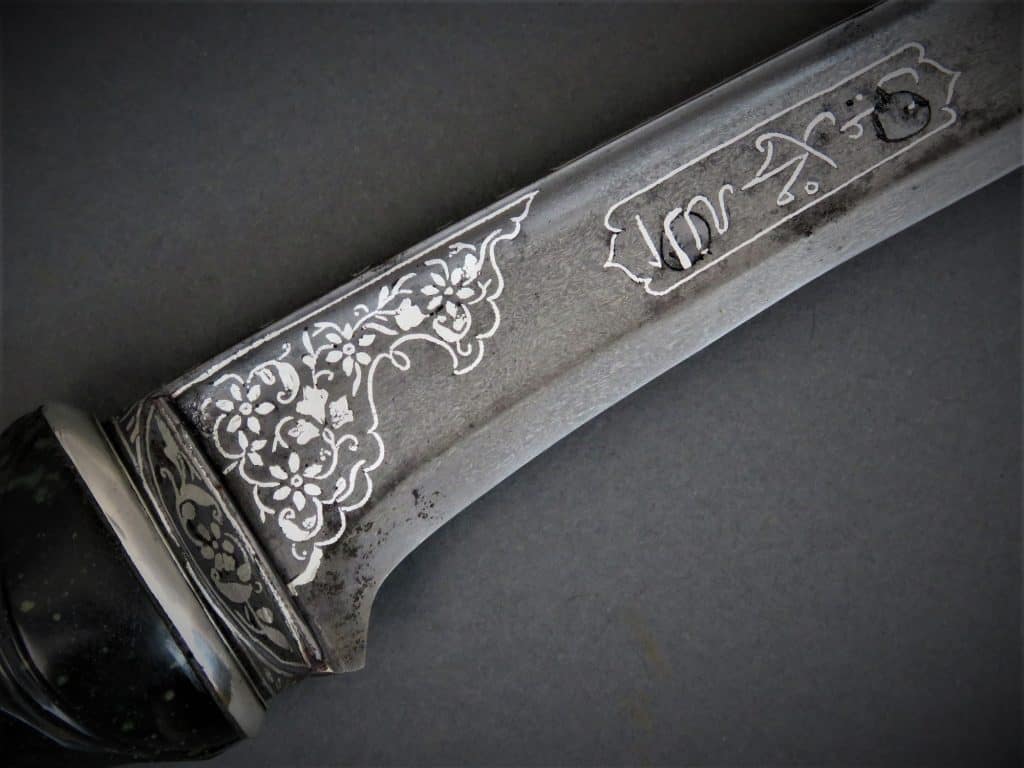
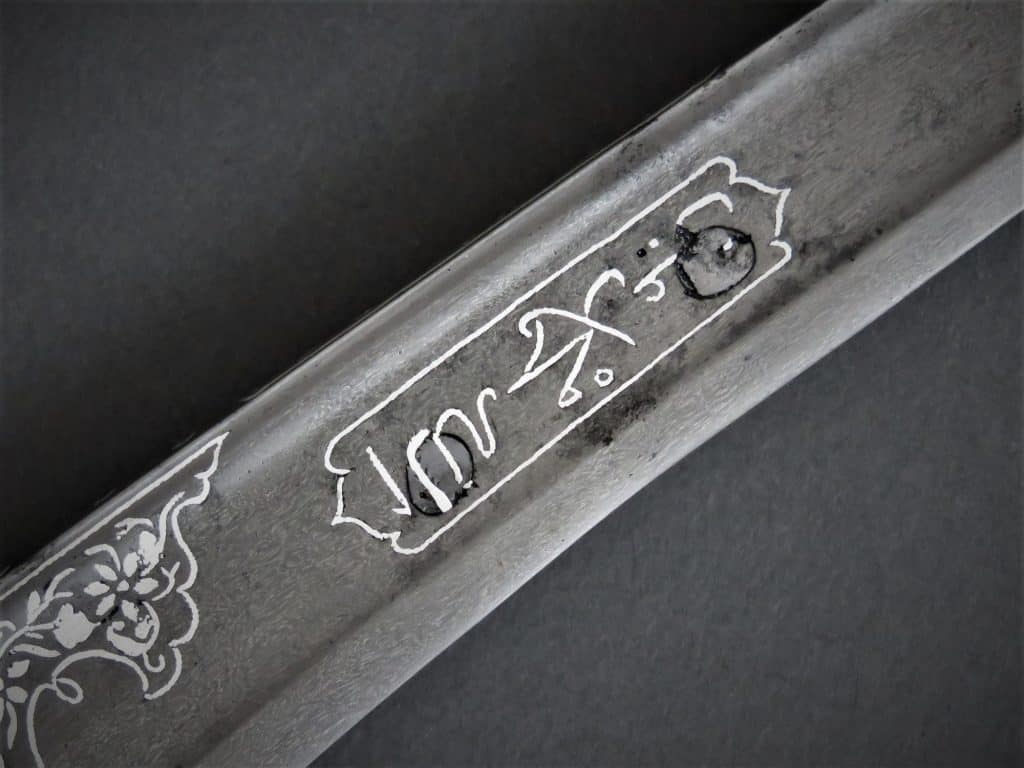
Although the inscription on this side of the blade points firmly to Sunni beliefs the inscription on the reverse side reads: Allah (God), followed by Muhammad (The Prophet), then Ali (Muhammad’s nephew – the fourth Caliph). This reveals an eminence held by Indian Sunnis for Ali mainly because of his warrior qualities. Although this respect for Ali is shared by both beliefs the presence of the first three Caliphs inscribed on the blade point firmly to Sunni beliefs. A third inscription on the back edge of the blade reads: Shah-hir (Shah /King) Sadr (a noble title) followed by the name Hadrat Jaband. This individual has not yet been identified.
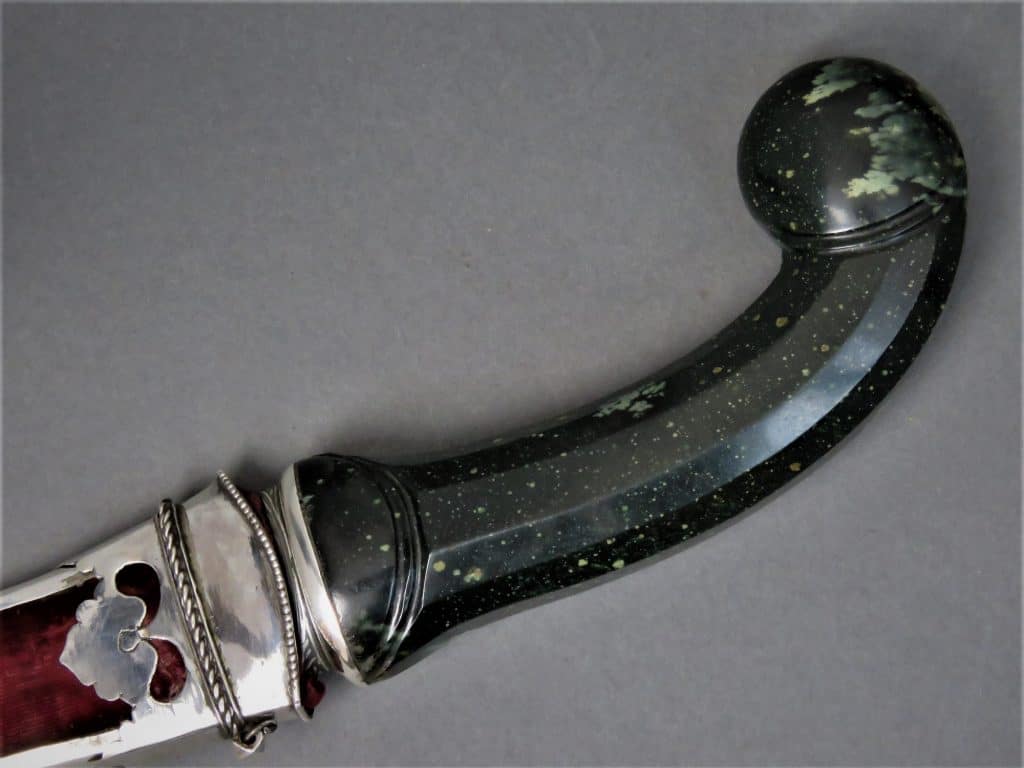
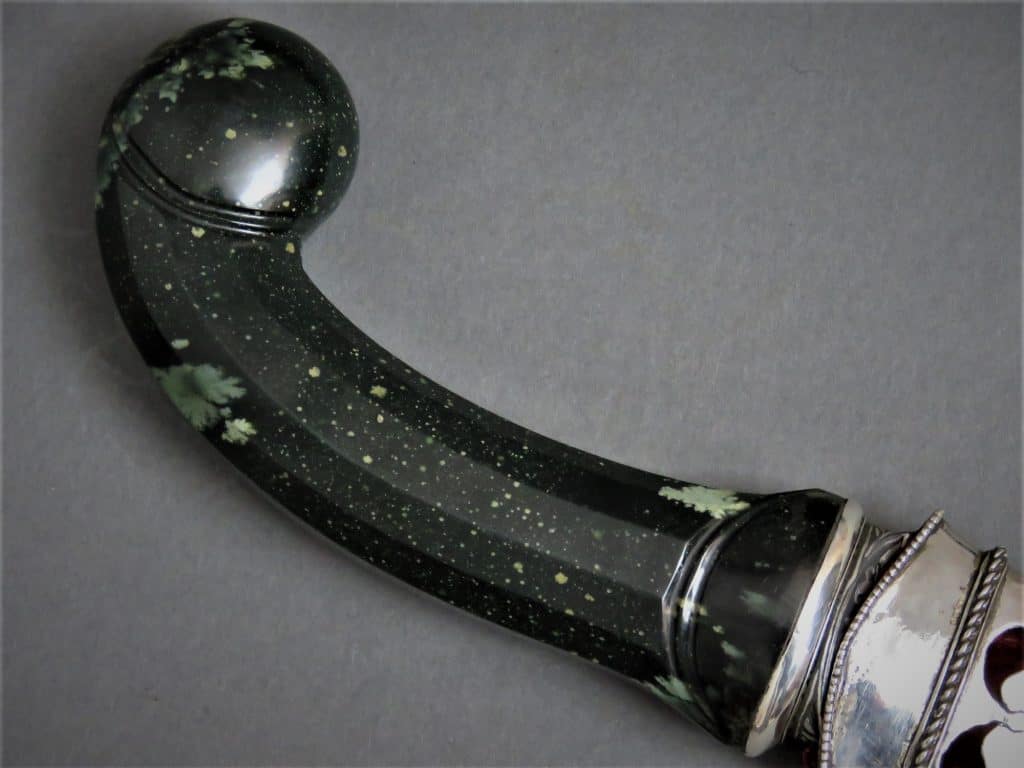
Sunni inscriptions of this type are very rare and indicate that the dagger was a personalised gift from a Moghul ruler to one of his important subjects. The inscriptions are supported by patterns of foliage and flowers in a cartouche at the forte on each face and on the back-edge with lotus flowers. The decoration is of a style similar to that found on weapons taken from the Tipu Sultan’s arsenal at Seringapatam. The date of the dagger corresponds to the height of Tipu Sultan’s court before its demise in the late 18th century but it could well have been commissioned within the northern Mughal kingdoms of India.
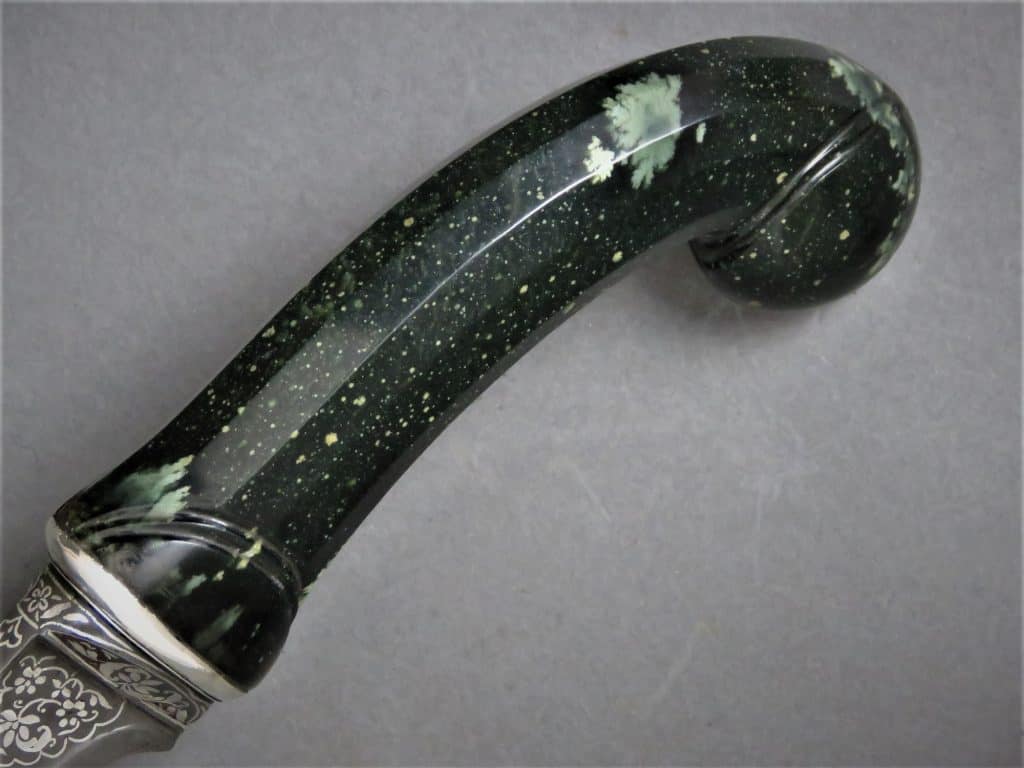

The red velvet-covered wooden scabbard is bound with silver. The locket is of openwork design involving a lotus leaf beneath and a band of rope work with beading at the mouth. It is mounted with a pierced faceted bead for suspension. The chape is mounted with a delicate scrolling terminal. The overall length is just under 14 inches (35.25 cm). The blade is just under 9 inches (just over 22.5 cm) long. The dagger and scabbard are in fine condition overall with a few blackened patches of age on the blade mainly towards the tip. The jade grip is in fine condition without chips or bruising.